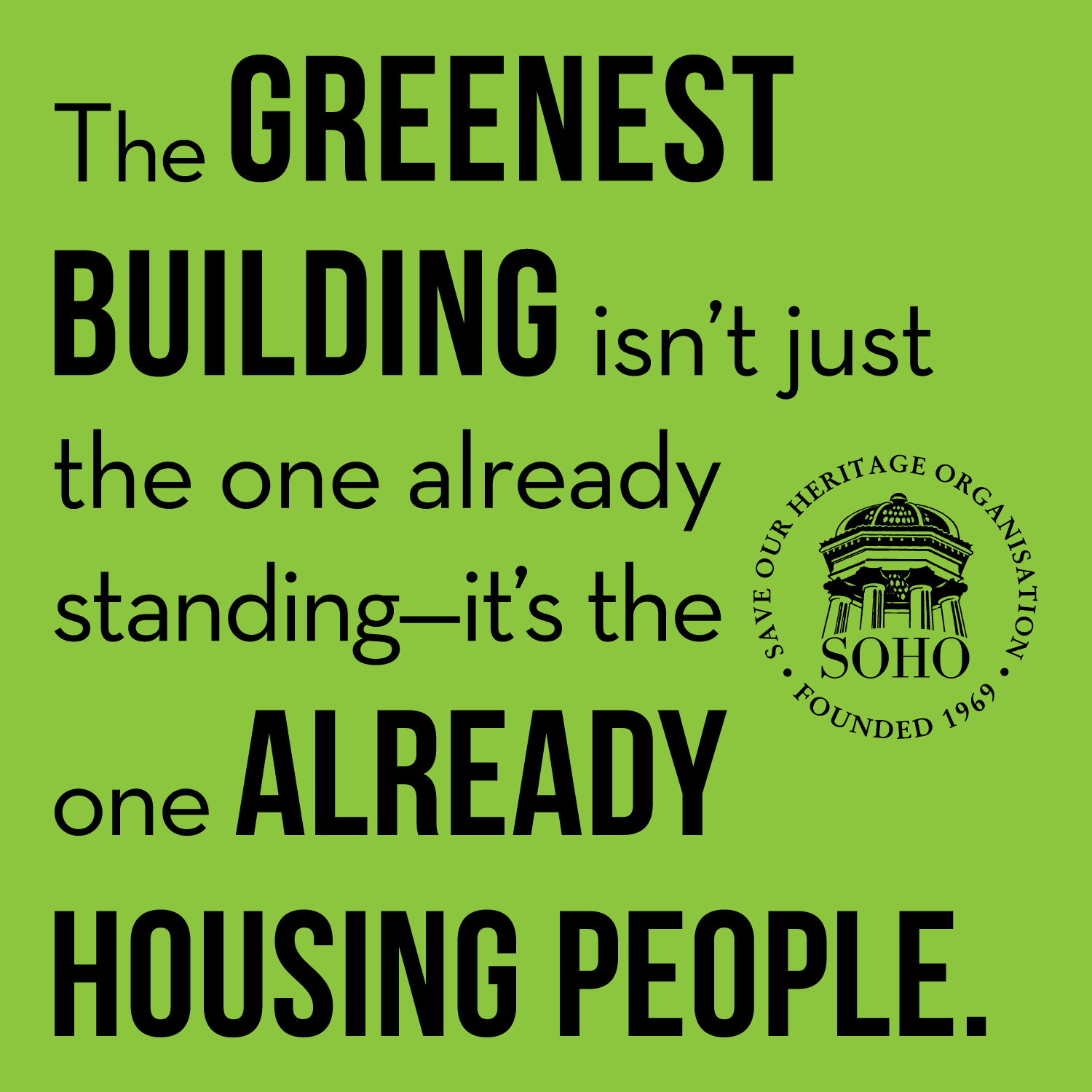|
Why Historic Buildings are the Ultimate in Sustainability
By SOHO editorial staff
January/February 2025
As architect and author Carl Elefante famously said, "The greenest building is … one that is already built.” Today we propose that the greenest building isn’t just the one already standing—it’s the one already housing people.
In a time when everyone is concerned about affordable housing, climate change, sustainability, and the urgent need to reduce waste, we want to remind everyone that one of the most impactful OR one of the best ways we can make a difference is by saving and reusing our existing buildings. one of the best ways we can make a difference is by saving and reusing our existing buildings.
When we construct a new building, the process consumes vast amounts of energy and resources—fuel for mining, transporting raw materials, manufacturing components, and construction itself. That energy, known as embodied energy, is already built into every historic building still standing today.
If we tear down these structures, that embodied energy is wasted. The demolition process itself generates tremendous waste, sending tons of materials to landfills. Then, constructing a new building requires significant energy and resources, restarting the process from scratch.
By contrast, reusing and repurposing existing buildings keeps that embodied energy in play. It’s recycling on a grand scale—only better, because it entirely avoids the energy costs of new materials. Plus, many older buildings were constructed with durable, high-quality materials that would be prohibitively expensive today.
Here’s a staggering fact: The construction industry is responsible for almost 40% of global carbon emissions. The environmental impact of demolition and new construction is immense. When you demolish a building, it’s gone, but it doesn’t just vanish; the destruction releases dust, carbon, and pollutants into the air, soil, and possibly water. Then, constructing a new building adds even more emissions through the production of concrete, steel, glass, and other materials.
Older buildings are not just environmentally sustainable; they’re also a key source of Naturally Occurring Affordable Housing (NOAH). These are homes, apartments, and mixed-use buildings that are affordable not because of subsidies, but because they already exist.
In San Diego, historic neighborhoods often provide a diverse range of housing options that are far more affordable than new builds. These areas typically offer smaller single-family homes, duplexes, and apartment buildings that fit into the fabric of the community—housing that’s accessible to working families, seniors, and young professionals alike.
When we preserve historic neighborhoods, we’re also preserving housing that doesn’t rely on costly government programs to remain affordable.
Adaptive reuse—transforming older buildings for modern needs—is the smart antidote to today’s affordable housing needs. Instead of bulldozing history, renovating these structures is a win-win: We preserve solidly built architectural character while dramatically reducing the environmental toll.
San Diego already has great, highly successful models of adaptive reuse. From repurposed warehouses in the downtown Ballpark District turned into affordable and mid-range residential rentals to remaking the Naval Training Center, now Liberty Station, into a thriving community hub, adaptive reuse breathes exciting new life into historic spaces while preserving our community’s cultural heritage and character. Transformations like these also attract businesses, restaurants, and entertainment venues, creating economic as well as environmental benefits.
Moreover, residents overwhelmingly support saving older buildings. By prioritizing historic preservation, legislators and politicians can demonstrate their commitment to sustainability and developers can tap into the growing demand for affordable housing and eco-friendly, walkable communities.
Finding new, productive uses for existing buildings is both practical and environmentally advantageous, but the complexities of converting buildings—historic or not—can be challenging. With office building and shopping mall tenancy down and still evolving post-pandemic, easing the approval process and reducing costs for adaptive reuse can greatly benefit San Diego. Fostering innovation and sustainability while preserving architectural heritage is a winning combination proven over and over again.
So let’s reframe the conversation: Historic preservation is about saving energy, protecting our planet, creating affordable homes, and making smart investments in our future. Every time you advocate for saving a historic building, you’re supporting these types of sustainability, and more. You’re also helping to reduce landfill waste, lowering carbon emissions, and preserving the unique identity of your neighborhood—all while helping others into affordable homes and potentially home ownership.
We can't build our way out of climate change, but we can make a significant impact by preserving or adapting the buildings that already exist. We can align efforts in historic preservation with the urgent environmental challenges of our time.
BACK to the table of contents
|
2025
2024
2023
2022
2021
2020
2019
2018
2017
2016
2015
|




